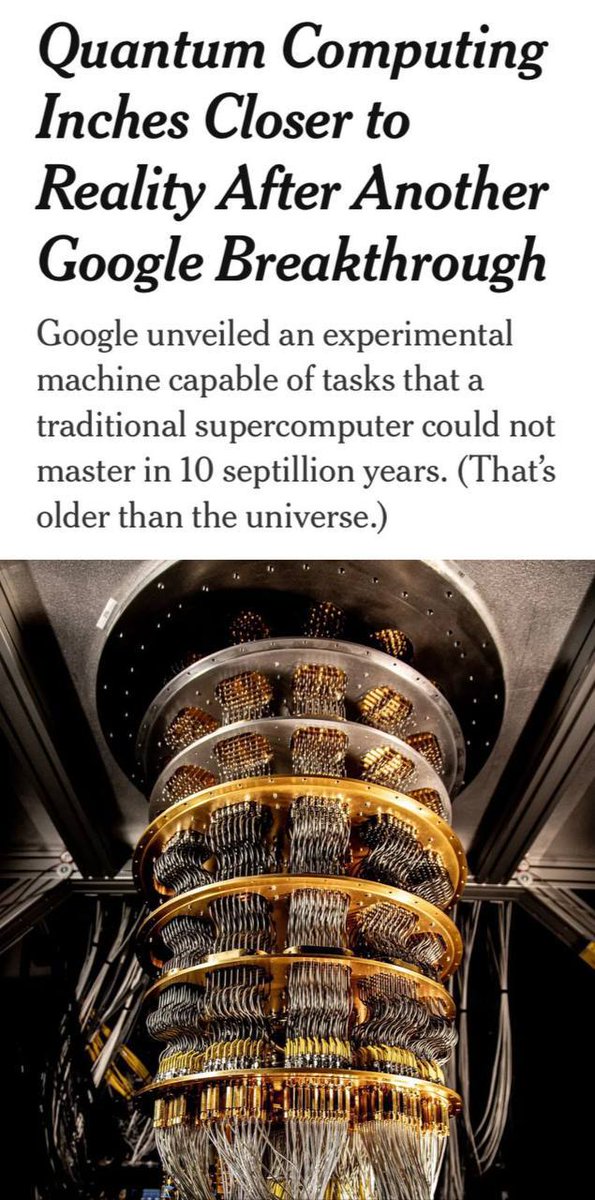

Google asserts that it has created a quantum computing algorithm that operates 13,000 times faster than the leading supercomputers. This advancement could bring the technology closer to practical use in medicine and material science in the next five years. Dubbed Quantum Echoes, the out-of-time-order correlator (OTOC) is a groundbreaking algorithm designed to enhance the understanding of the structural makeup of natural systems, such as black holes and molecules. Utilizing Google’s Willow quantum chip, the company claims this is the first occasion where quantum technologies have executed a verifiable algorithm, signifying that the algorithm can produce consistent results across any quantum hardware. This represents a significant advancement in achieving the repeatable, scalable outcomes necessary for practical applications, such as developing a quantum-powered engine.
Google presented these achievements in two studies published in October 2025, showcasing the capabilities of Quantum Echoes. The initial study, featured in Nature, illustrates how its verifiable results could pave the way for applications in areas such as nuclear magnetic resonance (NMR) spectroscopy. A subsequent paper, accessible on arXiv, details how Google researchers applied these quantum computing methods to unveil chemical structures using a tool the company refers to as a “molecular ruler” for measuring atomic distances. Collectively, the studies highlight Google’s progress toward functional quantum algorithms and chip technology.
Established in 2012, Google Quantum AI leads the way in the quest for sustainable, scalable quantum computing. In December 2024, the company introduced its Willow quantum chip, demonstrating computational power sufficient to complete a benchmark test in less than five minutes, which would take the most powerful supercomputer 10 septillion years. While such quantum achievements often result in exaggerated claims like reversing time, Google aspires to leverage its new algorithm to discover practical applications for one of the world’s most groundbreaking emerging technologies.
How it functions
To grasp the concept of Quantum Echoes, one must first familiarize themselves with fundamental quantum computing principles. At its core, quantum computing utilizes the principles of quantum mechanics to tackle complex mathematical challenges that classical computing cannot handle. The clearest way to conceptualize this is by swapping the 0s and 1s of binary systems with qubits, or quantum bits, generated through the manipulation of quantum particles such as photons, electrons, trapped ions, superconducting circuits, and atoms. As the fundamental information unit in quantum computing, qubits provide a distinct advantage over binary code by enabling the storage of multiple combinations of zeros and ones. These qubits can maintain this information in superpositions, wherein a single qubit embodies all its potential combinations and can exponentially expand when entangled in collective superpositions. These configurations function akin to waves, reinforcing and cancelling each other in a phenomenon referred to as interference. In quantum computing, an algorithm is employed by the user to interfere with a circuit comprising superpositioned, entangled qubits.
Google’s Quantum Echo represents a specific algorithm known as an out-of-time-order correlator (OTOC), which assesses the state of a qubit following a sequence of quantum operations. It evaluates alterations in quantum expectation values such as magnetization, current, density, and velocity to assess chaos levels within quantum systems. Google states that Quantum Echo transmits a precisely crafted signal into the Willow chip’s system, where it disrupts a qubit and subsequently reverses the evolution of the signal, producing a return signal or echo. This method is effective because it enhances with constructive interference, resulting in elevated sensitivity levels. Through these methods, Google significantly minimized the error rate of its system, achieving outcomes “below threshold,” indicating that its algorithm reduces errors while scaling up qubits.
The significance of Google’s Quantum Echoes algorithm
Google’s Quantum Echoes algorithm has significant implications for the company’s quest to establish real-world quantum computing functionalities. The tech titan’s practical application of this technology in an experimental setting necessitated that its final findings satisfy stringent, verifiable complexity precision criteria. These advancements were notably demonstrated in a collaborative experiment with UC Berkeley, where the Quantum Echoes algorithm yielded fresh insights into the structures and behaviors of two molecules. The findings aligned with those derived from conventional Nuclear Magnetic Resonance techniques, which depict molecular structures through the magnetic spins at the nucleus of atoms. This experiment illustrated how the algorithm could enhance the comprehension of the intricate dynamics associated with these magnetic spins. As per a company blog, the trial constituted a crucial step towards a quantum-focused exploration “capable of measuring previously unobservable natural phenomena,” akin to the invention of the telescope or microscope. Such advancements could be vital for developing new medications, enhancing our understanding of Alzheimer’s disease, or creating innovative industrial materials.
While still predominantly in the experimental phase, the algorithm suggests a future where quantum technology might be nearing some degree of practicality. Nevertheless, experts warn that Google still has significant hurdles to overcome before these algorithms can achieve real-world applicability. Presently, the conglomerate is competing against IBM, Microsoft, and a range of Chinese rivals to realize such advancements.